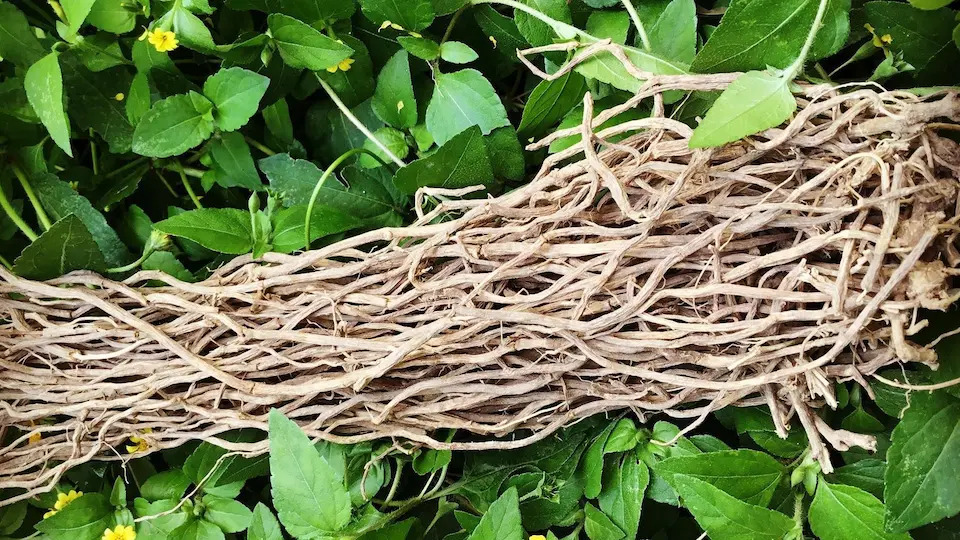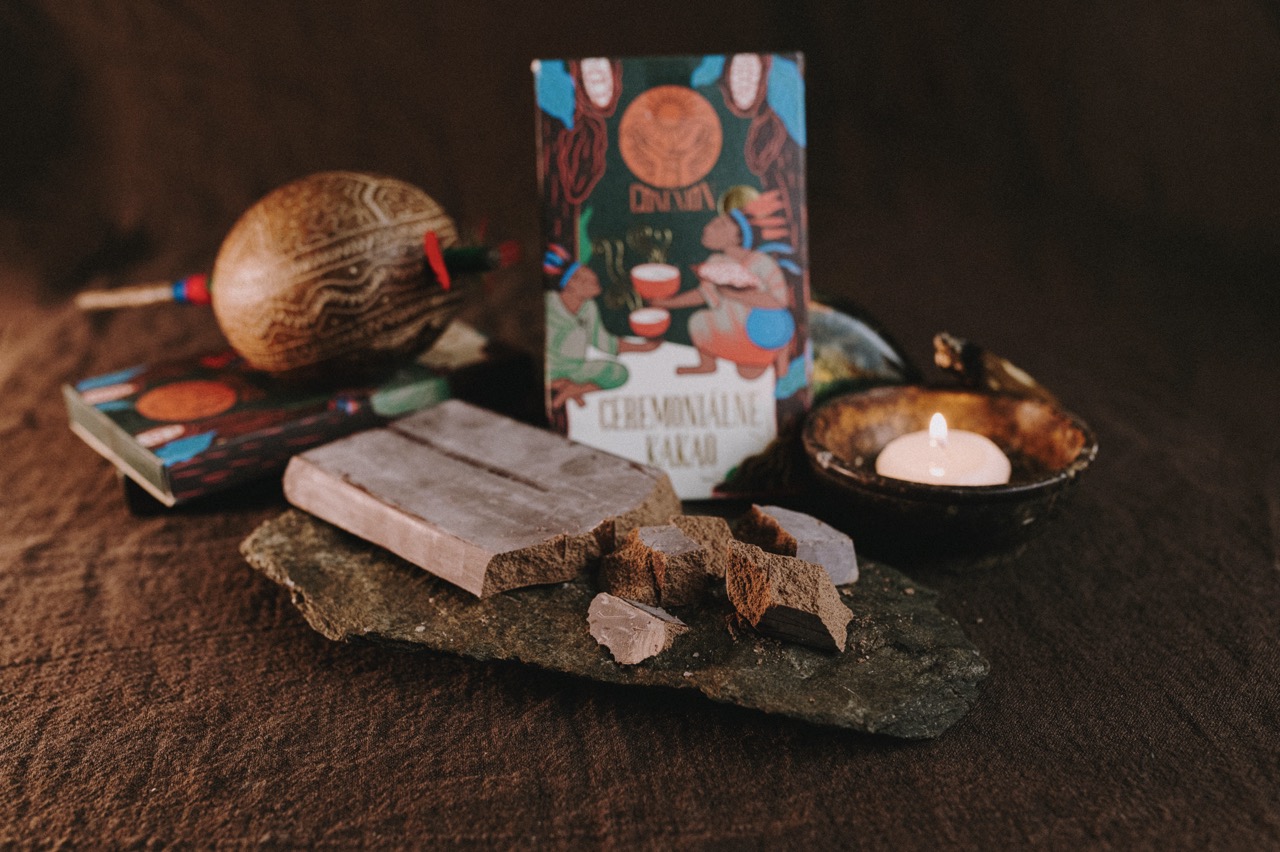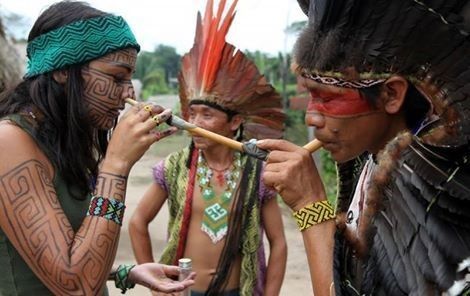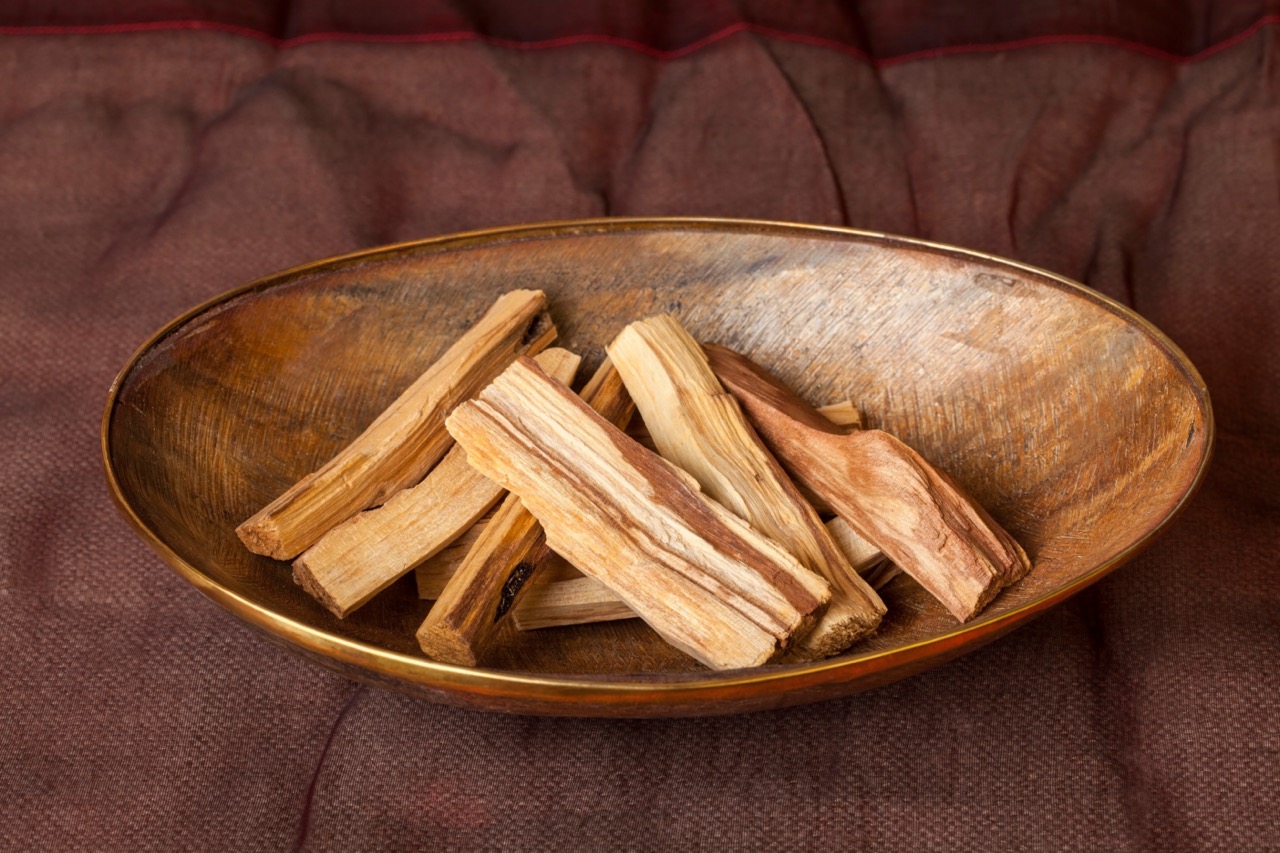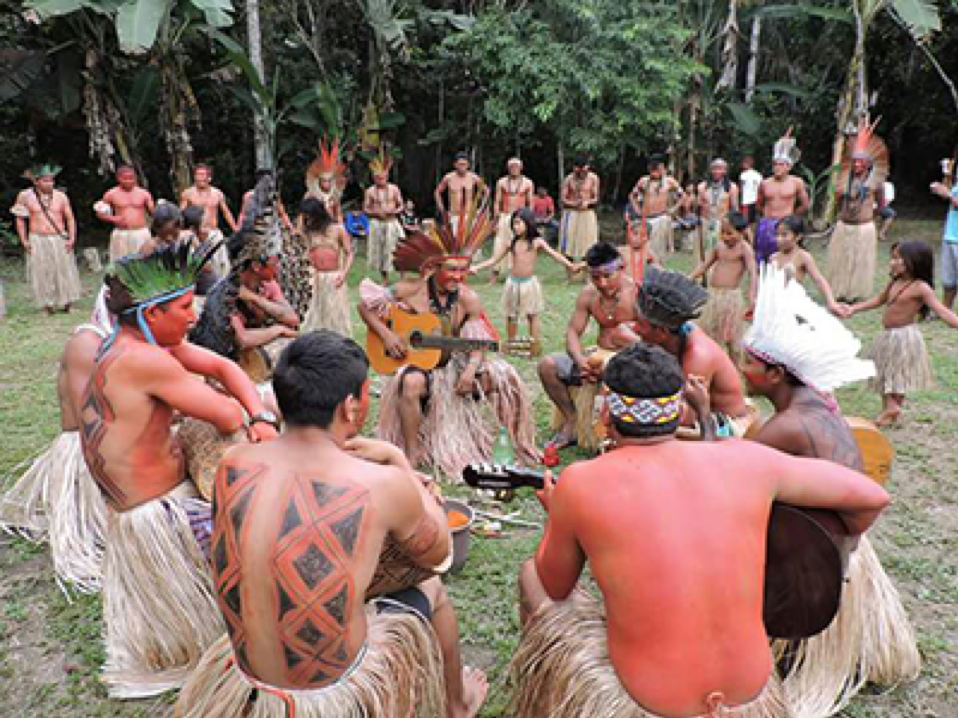
The Shawãdawa (Arara) tribe
‘Shawa’ means the red parrot Ara and ‘dawa’ means family. Around 1940 the tribe was thought to have died out. In the 1970s, the government tried hard to reach out to them because a highway was being built through their territory. With time they managed to do so (around fifteen years later), but the road was created and it became the reason for the increase in the exploitation of their lands. This land, rich in many different raw materials, was very invasively and intensively combed and deforested. It was only in 2016 that the Brazilian government signed a decree establishing the Arara tribe as belonging to this land – it was a great holiday for them.
For a long time they were associated negatively – because of the trophies they collected from fallen enemies – they made skull flutes, tooth necklaces, collected scalps. They were the people of war. Only later did they return to favor when we began to remember and rediscover their great openness and generosity for the not indigenous people. For a long time, from the very beginning, as soon as “white people” appeared on their lands, they interacted peacefully with the outside world, and included non-tribal people in their native life. In time, this aspect of their being took over and so they are recognized today – as open-minded, friendly, willingly sharing what they have with the outside world.
Like other tribes, they are strongly connected to nature and ancient traditions, including making and using Rapé.
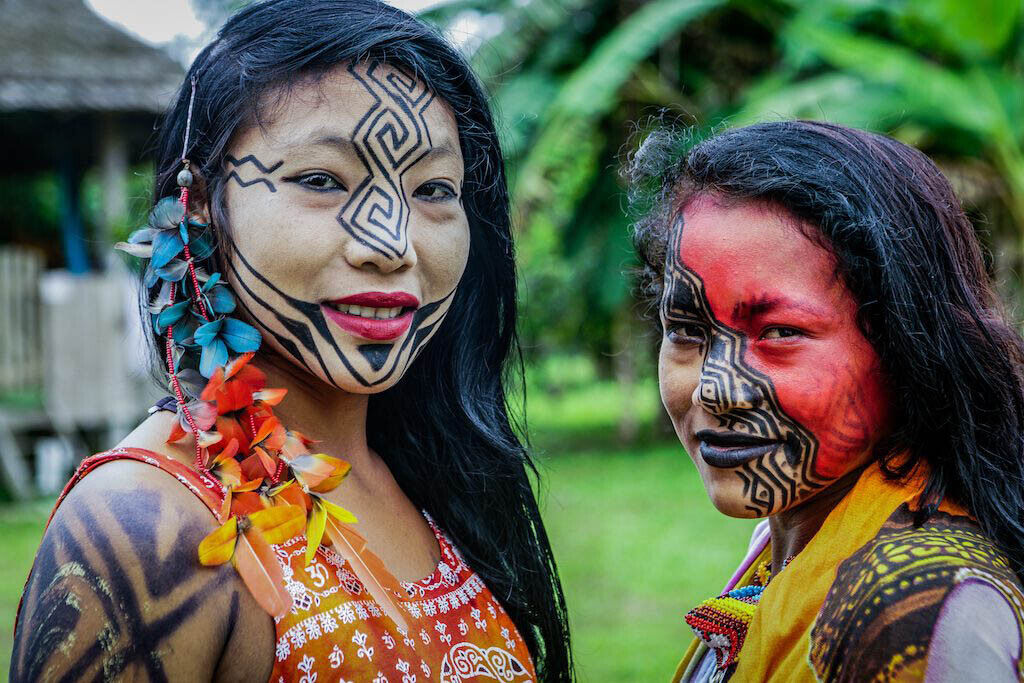
Like the other indigenous groups in Acre, the Arara Shawãdawa suffered the effects of incursions from the rubber plantation production system during the last decades of the 19th century. They were exploited, expropriated and limited in their physical and cultural reproduction. Over recent years they are reverting this process, by means of the revalidation of their language and traditions. as well as claiming their territorial rights from the Brazilian state.
The designation Arara was attributed to the group during contact when the first exploration began of the Alto Juruá in the 19th century. The Arara called themselves Shawãdawa.
The contact with agents of the rubber expansion front affected the group’s relationship with its mother tongue. Today there are few speakers of the Arara language. Because they had historically been ridiculed and discriminated when they spoke their own language, the Arara stopped transmitting the language to their descendants, creating a younger generation educated only in Portuguese. However since the beginning of the 1990s the Arara have been trying to “rescue” their own language.
Capture
To capture the Arara for labor, the “bosses” sponsored various incursions, using some of the old (ancestral) Arara as agents of the process of inserting the group into the economic activities in the rubber plantations. These ancient ones are a strong presence in the Arara memory, and are references for the identity of the group and territory which they have always occupied.
After recovering part of their territory again, many families who livedscattered throughout the rubber plantations along the Liberdade and Baje rivers preferred to abandon the work and go to live with their relatives in the reserve, or near it.
Tradition
Today, the elders are the “guardians of the Arara memory” and they try as much as possible to transmit it to their descendants. The interest of the younger ones in learning the myths and rituals which the Arara intensively practiced in the past can be seen. Nowadays they practice the rituals without regularity. Not to say they are absent. The ritual of mariri, or the “injection of the frog,” and sinbu, the Shawãdawa still practice. The first of these is an indigenous dance also found amongst other Pano groups. Now they mainly practice it as a means of maintaining the cohesion of the group, emphasizing the Arara identity. It is the oldest ones, who are still fluent in the language, who sing and teach the younger ones during the ritual.
Shawãdawa Rapé
Another ritual used by the Arara to help the hunter is the use of snuff:
“The person scrapes the powder from the bone of a deer, or a pig, from the shinbone of the deer and from the pig you scrape the bone of the thigh, you gather the powder, then you scrape the frog’s milk as well, put it on a board, then you scrape the mixture, and roast it with a little tobacco. So you make the snuff. Taking the snuff like that is better than taking the injection. You sniff it.” (Chico Cazuza, 17/02/2000, Raimundo do Vale).
Ayahuasca
The ritual of sinbu (liana/ayahuasca) the Arara still practice. Most of the group takes part at some point in one or the other of these rituals. However some of the Arara do not ingest the sinbu any more, even if they have made use of it at some point. Before they began to work in the rubber plantations the Arara partook of sinbu on a regular basis, sometimes as a cure, when the shaman took the drink and sought to remove the ills from the patient and bring them back to health. According to one of the Arara:
“My late father was a shaman. When somebody got ill, say he was burning with fever, or with another illness, when he saw he was going to die, my dad drank it. He took it and began to sing for that illness, because the person had that illness, he would sing. When he saw that he was getting better, he would say he was getting better. When he saw that he would not get better, that he was going to die, dad told him he would not escape”
Video: The Psychedelic Healing Power of Ayahuasca
Kambo
Another characteristic ritual of the Pano groups, which the Arara practice, is that aimed at recovering the luck of the hunter. When the hunter is out of luck, the Arara prepare the ritual of the “injection of the frog” to recover the essential qualities of the hunter: aim, vision, hearing and luck.
They catch a campo frog and with a hook, extract the “milk” which covers its body. The milk which comes out of the frog’s head is only used for the snuff which they apply to the hunters’ dogs. Then they burn two or three small circular points in the hunter’s skin with a cigarette, or with a braca, to introduce the frog’s milk. A small amount of milk is enough to produce vomits and evacuation. This is also stimulated by the large scale consumption of caissuma, a drink made from fermented manioc, before the injection. The next day, the hunter will be ready to continue his hunting activities with much greater skill and efficiency.
According to Arara Chico Cazuza:
“The injection is made when a person is weak. When he climbs these slopes, which we here call earth. When we stop climbing we get that buzzing in our heads, and our legs go weak. Then we take the frog’s milk, the injection to make us improve. That cleans everything, what we are feeling, we get better. But we also have to take a little of some other things to clean the stomach as well, to provoke vomit. At the moment when you take the injection, which puts the frog’s milk on top, which disagrees with everything you’ve got in your head, then it all heats up. The ears gets hot, there is that buzzing, you can’t stand it, because that’s what is the weakness.” (Chico Cazuza, 17/02/2000, Raimundo do Vale).
Smudging
Smudging with the herb Tipi is another ritual the Arara practice. It is also aimed at improving the qualities of the hunter. Improving his and his dog’s skills. One of the Arara hunters explained:
“Tipi is to smudge, when the person has difficulties, he is smudged. With hair from the deer and the pig. You put it in the sun to dry. You do it very early in the morning so you can go into the forest to hunt. Do the smoking, then you go and hunt. You do it three times. You might do it this morning, Thursday, then next Thursday another smoking, then the one after. Do it three times.” (Chico Cazuza, 17/02/2000, Raimundo do Vale).
The Time of Myths
The aforementioned rituals come from a mythic time, without a precise date. One of the older Arara referring to the frog injection said:
“…this is from the beginning of the world. The frog vaccine is good for anyone who has tired legs or who wants to put on weight. To go hunting, it’s very good. For headache it’s very good. A person who sleeps a lot, takes the frog vaccine, he’s better. I have taken a lot of frog vaccine.” (João Martins, 10/03/2000, Cruzeiro do Sul).
Especially by the elders recount the Arara myths. Some of the young people have begun to learn them and repeat them as well. They tell the myths in the Arara language or in Portuguese. As with practically all mythic narratives, the versions that they tell vary, but not the structure of the myth. The narration of the myth of the origin of the Arara is quite long and depending on the narrator can suffer some alterations in the way they tell it.
Arara origin myth
To sum up, the main elements of the myth are the following: there is a village with several children, and near the cultivated land there is a Sumaúma tree in which lives a hawk. Almost every day this hawk goes out to hunt and bring food for its chick. When the hunting gets scarce he begins to catch the indian children. He eats all of them except for one.
Then a man from the village decides to kill the hawk before he finishes off the indians. After a lot of difficulty he manages to kill the bird. Building a ladder to reach the nest, and he puts the feathers inside a basket. One night this basket begins to make a noise, which the caboclo thinks is cockroaches eating the feathers.
The next day he opens the basket, and there are no cockroaches, only feathers. After several nights hearing the noise, and checking the basket in the morning without finding what can be making the noise, one day when the noise is repeated all the Pano tribes emerge from the basket singing with happiness, each of them saying their name: Shawãdawa, Yawanawa, Kaxinawa, Xaranawa, Duwanawa, Puyanawa and others. It is interesting to note that in Arara cosmology they, like the other Pano groups, should have originated from the feathers of the same hawk. From which it is also possible to infer a socio-cultural and linguistic proximity.
More info: https://pib.socioambiental.org/en/Povo:Arara_Shaw%C3%A3dawa
This natural product is offered for its ethnographic and historical value and is supplied without express or implied fitness for a particular purpose. All information provided is for educational, scientific, ethnographic and historical research purposes only. All products are sold as botanical samples only with no express or implied claims for a specific purpose or use. The use and use of this product is at the discretion, responsibility and risk of the customer.
Chilcuague - Aztec Gold Root
Chilcuague, also known as Heliopsis longipes or "Aztec Gold Root," is a medicinal plant native to central Mexico, particularly the Sierra Gorda region. Its root has been traditionally used for its ...
Ceremonial Cacao – The Elixir That Opens the Heart
Ceremonial cacao is much more than a hot drink. It is a sacred gift from the Earth, used for centuries in spiritual practices and healing rituals by indigenous cultures of South and Central America...
Hapé sacred medicine, shamanic snuff
Hapé or Rapé (Hapeh, Rapeh, Hapey) is legal and sacred shamanic medicine from the Amazon, pronounced "ha-peh" in English, is a fine powder prepared from Mapacho and a mixture of herbs, seeds, and a...
Palo Santo: a sacred wooden incense burner from Peru
In recent years, Palo Santo has become synonymous with space clearing and meditation rituals around the world. This sacred wooden product, which comes from South America, is popular not only for it...

